Double Pickleball Rules: A Guide to the Two-Player Match
Pickleball doubles offers a dynamic and exciting experience for players, testing their skills and strategy in a two-on-two format. While doubles play shares many rules with singles, it has key distinctions that require players to adjust their strategy and technique. Understanding the specific double pickleball rules will help you confidently navigate the court and make the most of this fast-paced and rewarding format of pickleball.
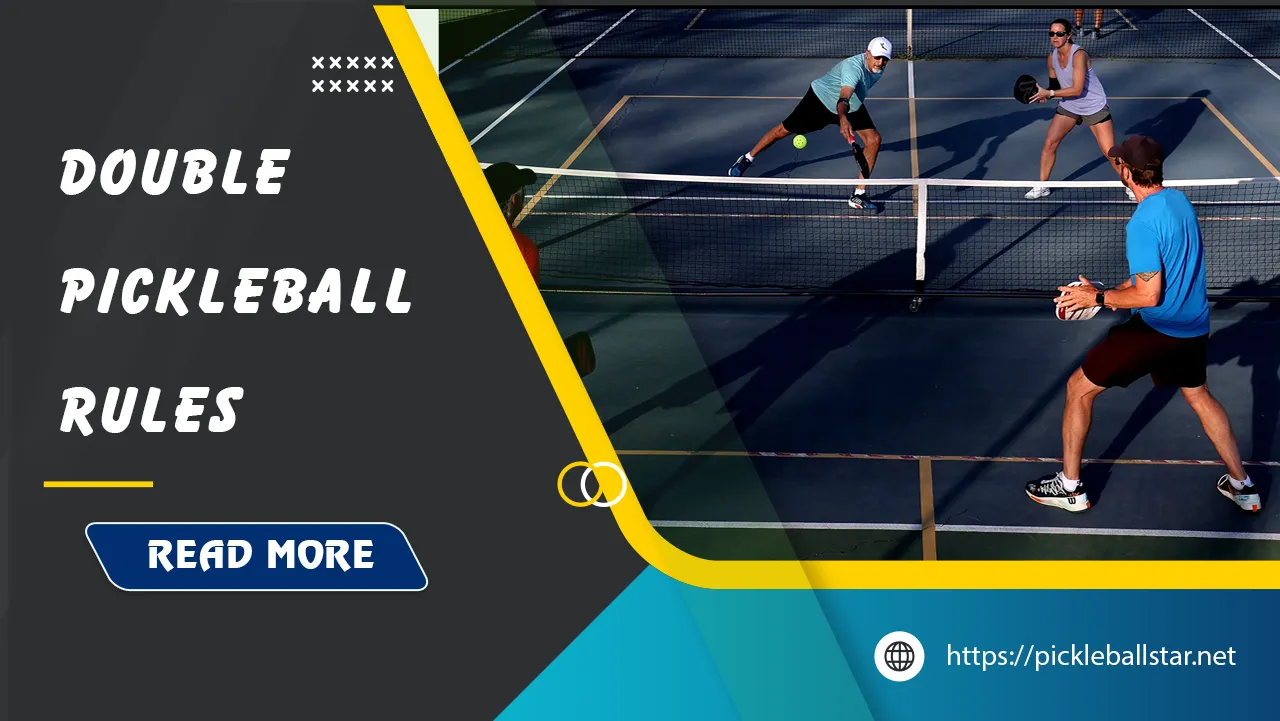
The Pickleball Court: Understanding the Playing Area
Court Dimensions: A Smaller, Faster-Paced Arena
The pickleball court is decidedly smaller than a tennis court, and this unique setup facilitates a brisk, engaging game. The court measures 20 feet by 44 feet, significantly smaller than a tennis court’s 27 feet by 78 feet for singles play. This compressed area emphasizes quick reflexes, strategic placement, and teamwork. It’s not just a scaled-down version of a tennis court, but a reimagined space that demands a different kind of athleticism and finesse. Picture it as a fast-paced arena where every inch counts, compelling players to be constantly vigilant and fully engaged in every rally.
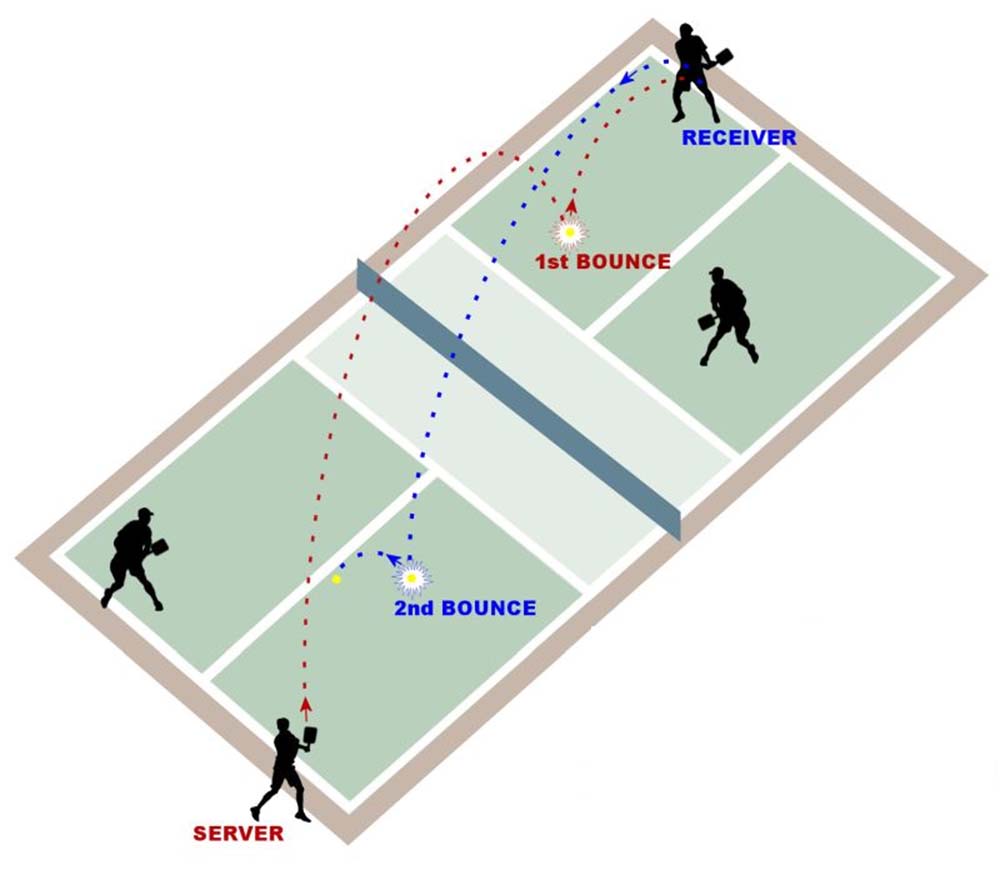
The Non-Volley Zone: A Key Rule for Singles and Doubles
One of the most distinctive features of the pickleball court is the non-volley zone, commonly known as the “kitchen.” This 7-foot area on both sides of the net is critical in shaping the game’s dynamics. In both singles and doubles, players are not allowed to enter this zone to volley the ball. The kitchen rule ensures that the game remains fair and strategic, preventing dominant players from smothering the net and forcing a more evenly contested match. This rule introduces a metaphorical “no-man’s land” where players must balance aggression with caution, timing their entries and exits with precision and care.
Serving Rules: Getting the Point Started
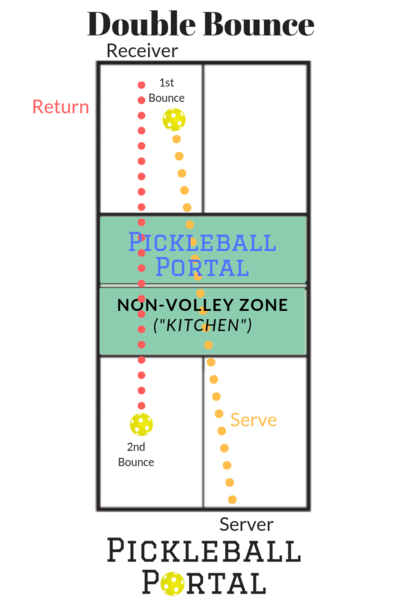
Serving Rules: Underhand Technique and Placement
The serve in pickleball is an art in itself, distinguished by its underhand technique. Unlike tennis, where powerful overhand serves are the norm, pickleball mandates an underhand serve with the paddle contacting the ball below the waist. This often lends itself to a more strategic approach, focusing on placement rather than power. Additionally, the serve must be executed diagonally, landing in the opponent’s service court. These serving rules, consistent across both singles and doubles, lay the foundation for a fair and engaging rally, emphasizing control over raw power.
The Second Serve: A Chance to Get It Right
Pickleball has built-in leniency with the concept of the second serve. In doubles play, each team gets two service attempts, except for the first serve of the game. If the first server faults, their partner then gets the opportunity to serve. This rule provides a crucial safety net, allowing players to regroup and refocus. It’s like having a second chance at life within the game, where a mistake doesn’t necessarily doom the team but offers them a renewed opportunity to correct their course.
Gameplay: Basic Rules for Rallies and Scoring
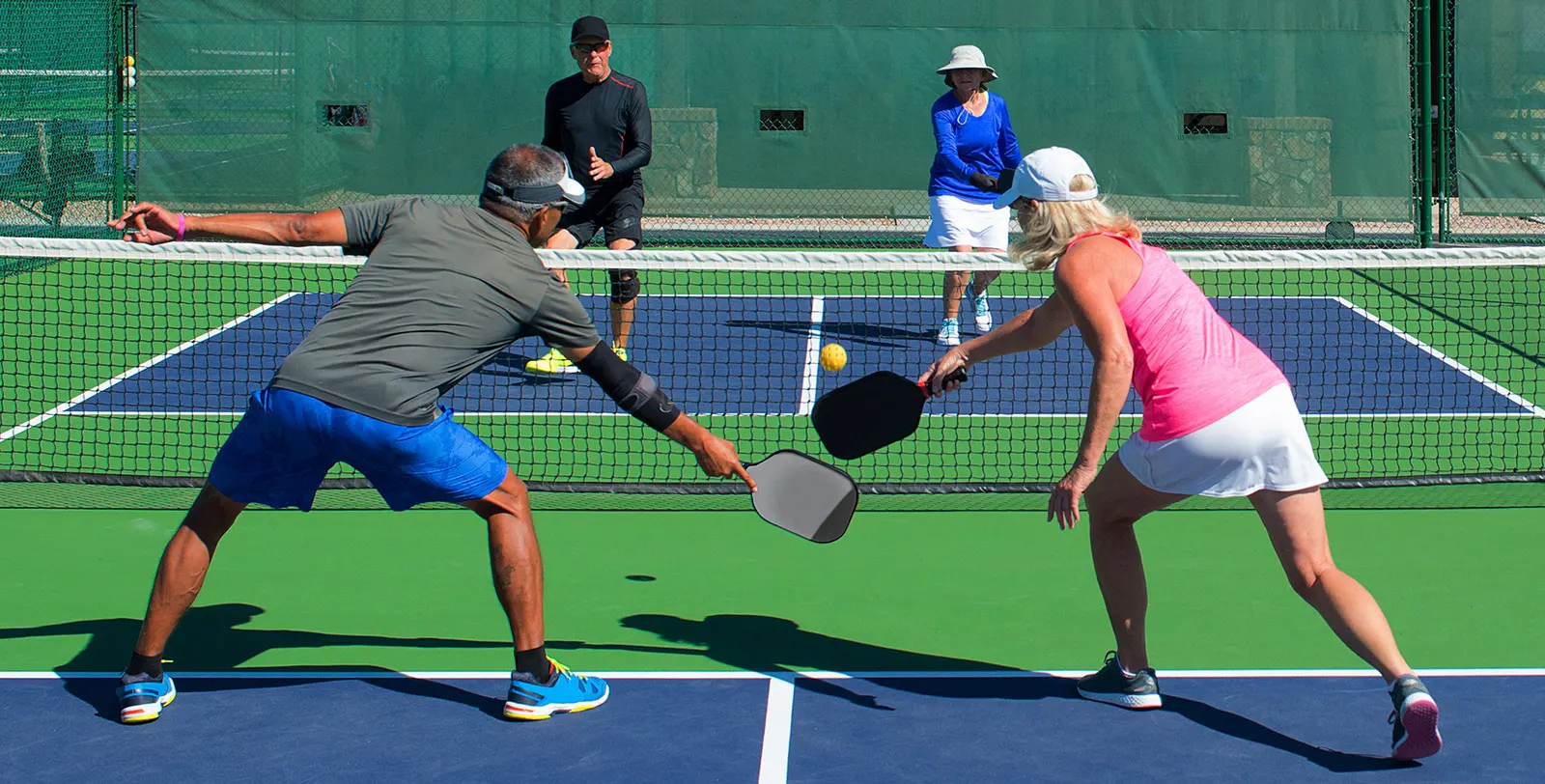
The Rally: Hitting the Ball Back and Forth
The essence of pickleball lies in the rally, where players hit the ball back and forth across the net, striving to outmaneuver their opponents. The ball must clear the net and land within the opponent’s court boundaries. If it fails to do so, the opposing team earns a point or the serve. This tug-of-war encapsulates the thrill of pickleball, with every hit acting as a move in a high-stakes chess game, demanding both strategic foresight and split-second reflexes.
Scoring: Points and Games
Scoring in pickleball can be straightforward yet intricately strategic. Only the serving team can score points, and games are typically played to 11, 15, or 21 points, with a team needing to win by at least two points. This scoring system, consistent for both singles and doubles, ensures that each game remains competitive until the very end. It embodies the notion that victory is not just about reaching a target but surpassing it, always keeping players on their toes.
Serving Team Scores Points and Rally Scoring Format
In doubles, only the serving team can score points. The rally scoring format means each rally can potentially result in a point a concept that adds layers of strategic depth to the game. Here’s how it works:
- Game starts at 0-0 with one team serving from the right side.
- Serving team wins a rally, earns a point, and serves from the left side.
- Receiving team wins a rally, gains the right to serve.
- Serve positioning is determined by the serving team’s score (even/odd).
- Game typically played to 11, 15, or 21 points; win by 2.
- Upon reaching 20 points, teams ‘freeze’ and can score only while serving.
Understanding these scoring nuances allows teams to strategize effectively, optimizing their serves and returns to maximize scoring opportunities.
Key Double Pickleball Rules to Remember

The Volley Rule: No Volleying in the Kitchen
The no-volley rule within the non-volley zone is paramount in pickleball doubles, dictating that players cannot hit the ball in mid-air while standing inside the kitchen. This rule prevents players from dominating the front of the court and fosters a more dynamic gameplay. Imagine the kitchen as a strategic landmine zone where timing and precision dictate safe passage and success.
The Let Serve: Mistakes and Second Chances
The concept of a ‘let serve’ occurs when the ball hits the net on a serve but lands correctly in the service court. This results in a do-over, providing the server with another chance to get it right. While pardonable errors, these let serves emphasize the game’s balance between strict adherence to rules and humane allowances for occasional slip-ups.
The Two-Bounce Rule: A Key Distinction in Doubles
The two-bounce rule is a critical distinction in pickleball doubles, necessitating that the ball must bounce once on each side of the net before volleys are allowed. This rule counteracts aggressive front-of-the-net play, giving both teams an opportunity to set up their strategies. The initial two bounces act as a dance of patience before the flurry of volleys, balancing responsibility equally between teams.
The Rotation Rule: Strategic Player Movement
The rotation rule in pickleball doubles ensures equitable distribution of play and strategic movement across the court. After each point, the serving team’s players switch sides, promoting continuous engagement and teamwork. It’s akin to a well-choreographed dance where each step has predetermined precision, keeping both players aligned in their strategy.
Doubles Strategies and Tactics
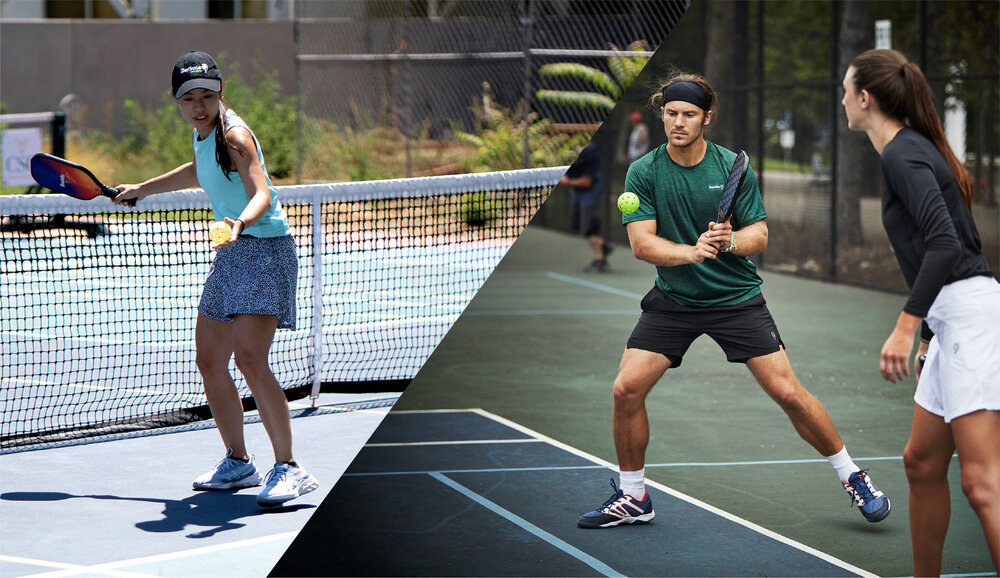
Communication: The Key to Success in Doubles
Effective communication between doubles partners is paramount for success. Clear calls and signals can turn the tides of the game. Whether through vocal cues or hand signals, synchronizing movements and strategies ensures that both players are in harmonious alignment, navigating the court like a well-coordinated symphony.
Teamwork and Positioning: Covering the Court Together
Strategic positioning and teamwork are essential in covering the court efficiently. Players should adopt a complementary play style where one covers for potential weaknesses of the other. This synchronized positioning allows the pair to anticipate opponents’ moves and respond agilely, thus drawing a parallel with a well-oiled machine operating in perfect harmony.
Shot Selection: Choosing the Right Shots for Your Team
Shot selection is an art form, requiring acute awareness of the opponent’s positioning and the strengths of your own team. Opting for lobs, dinks, or drives based on real-time analysis can exploit opponents’ weaknesses while playing to your collaborating partner’s strengths. This strategic decision-making process is akin to choosing the right brushstroke in a masterpiece, shaping the flow of the game with precision and aesthetic finesse.
Dinking: The Soft Game That Dictates Control
Dinking is a finesse move, where players perform soft, short shots that land just over the net into the opponent’s non-volley zone, ideally forcing them to return with another dink or a high bounce that can be smashed. This tactic slows the game down, allowing for more precision and control. It requires a delicate touch and strategic thinking, akin to a chess player advancing pawns to set up a checkmate. Mastering the dink shot adds an extra layer to your game’s strategy, transforming the court into a battlefield of patience and precision.
The Lob Shot: Adding Height to Gain Advantage
The lob shot involves hitting the ball high into the air, aiming to land it deep into your opponent’s backcourt. This tactic is particularly useful when opponents crowd the net, giving you the opportunity to push them back and regain control of the court. Executing a perfect lob is like tossing a wild card into the game it can disrupt the opponent’s formation and create an opening for offensive maneuvers. But beware; poorly executed lobs can be easily smashed back for a point loss.
The Smash: Turning Defense into Offense
The smash is a powerful downward hit, often employed against high, easy returns or lobs. It’s a high-risk, high-reward tactic that can end a rally swiftly. Imagine the smash as the climax of a symphony, where all elements build up to a powerful crescendo, leaving the audience in awe. Precision, timing, and power converge in a perfect smash, turning the tide of the game in a heartbeat.
Training and Drills for Doubles

Drills for Communication and Coordination
Effective communication and coordination drills are essential for doubles. Practicing with drills like “shadow movements,” where partners move in unison without a ball, helps synchronize movements. Another useful drill is the “eye contact drill,” where partners commit to making eye contact before executing a shot. This fosters a deep sense of understanding and trust, allowing for seamless teamwork. Think of these drills as the fine-tuning of an orchestra, ensuring every instrument plays in harmony.
Reflex and Reaction Drills
Improving reflexes and reaction times is crucial for the fast-paced nature of doubles. Drills that involve rapid-fire volley exchanges can be instrumental. Partners stand close to the net and volley back and forth at a brisk pace, focusing on quick reflexes and precise placement. This drill is reminiscent of a high-speed ping pong match, sharpening reflexes and hand-eye coordination to a razor’s edge.
Endurance and Agility Drills
Endurance and agility are equally important for maintaining peak performance throughout the match. Shuttle runs, ladder drills, and cone drills can enhance agility and stamina. These exercises mimic the quick lateral movements and sudden bursts of speed required on the court. Visualize these drills as a dance rehearsal, where each step is crafted for perfect execution, ensuring you’re light on your feet and ready for any challenge.
Equipment and Gear for Doubles Play
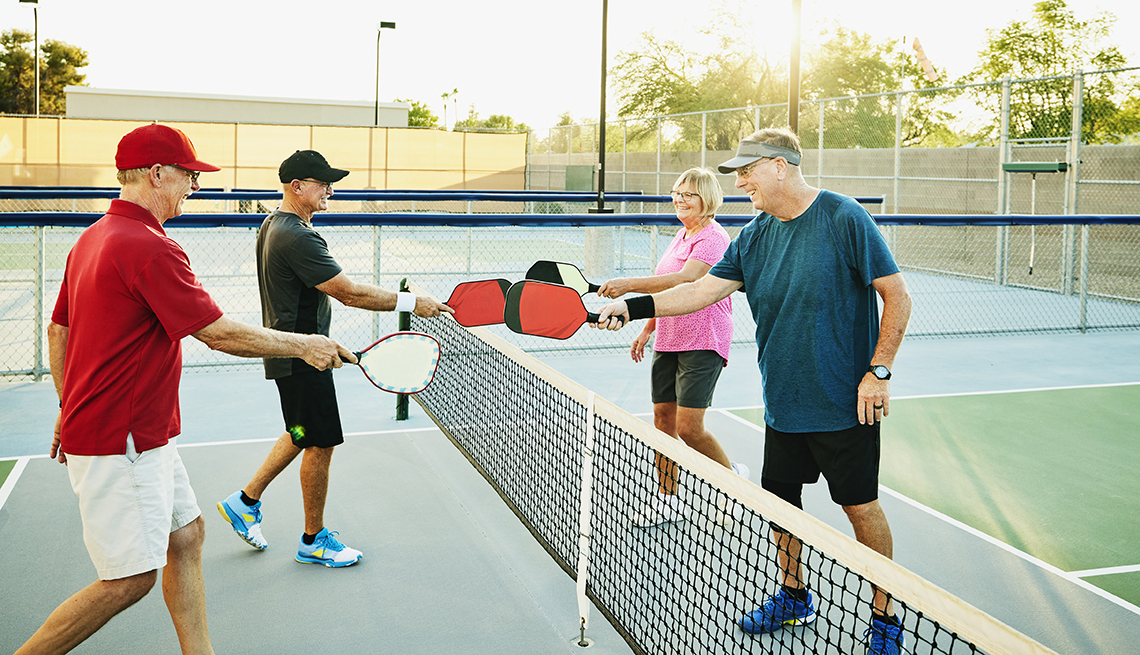
Paddles: The Right Tool for the Job
Choosing the right paddle can significantly impact your game. Paddles come in various materials wood, composite, and graphite. Wood paddles are the heaviest but most affordable, ideal for beginners. Composite paddles offer a good balance of weight and control, while graphite paddles are lightweight and provide excellent ball control, preferred by advanced players. Selecting the right paddle is like choosing a musical instrument; it should feel comfortable and become an extension of your hand, allowing you to execute every move with precision.
Shoes: Ensuring Footwork and Comfort
Appropriate footwear is essential for maintaining agility and preventing injuries. Court shoes specifically designed for pickleball provide the necessary grip and support for quick lateral movements. Shoes with good cushioning and stability can make a difference in your footwork, akin to a dancer’s shoes enabling graceful, fluid movements.
Apparel and Accessories: Dressing for Success
Comfortable, breathable clothing is a must for extended play. Lightweight, moisture-wicking fabrics help keep you cool and focused. Accessories like wristbands and sweatbands can manage perspiration, while polarized sunglasses can protect your eyes from glare during outdoor play. Dressing for success in pickleball is akin to preparing a knight for battle; every piece of gear contributes to your overall readiness and performance.
Partner Selection and Chemistry
Choosing the Ideal Partner
Selecting the right doubles partner is as crucial as honing your technique. An ideal partner complements your play style, shares your strategic approach, and communicates effectively. Mutual trust and understanding are the cornerstones of a successful partnership, much like a dynamic duo where each enhances the other’s strengths and covers weaknesses.
Building Chemistry on and off the Court
Chemistry isn’t built overnight; it requires practice and mutual respect. Spending time with your partner both on and off the court can strengthen your bond. Exercises like team-building activities, discussing strategies, and understanding each other’s communication styles can contribute to a harmonious partnership. Think of a strong doubles team as a well-coordinated dance duo; every step is in sync, creating a seamless and beautiful performance.
Common Mistakes and How to Avoid Them
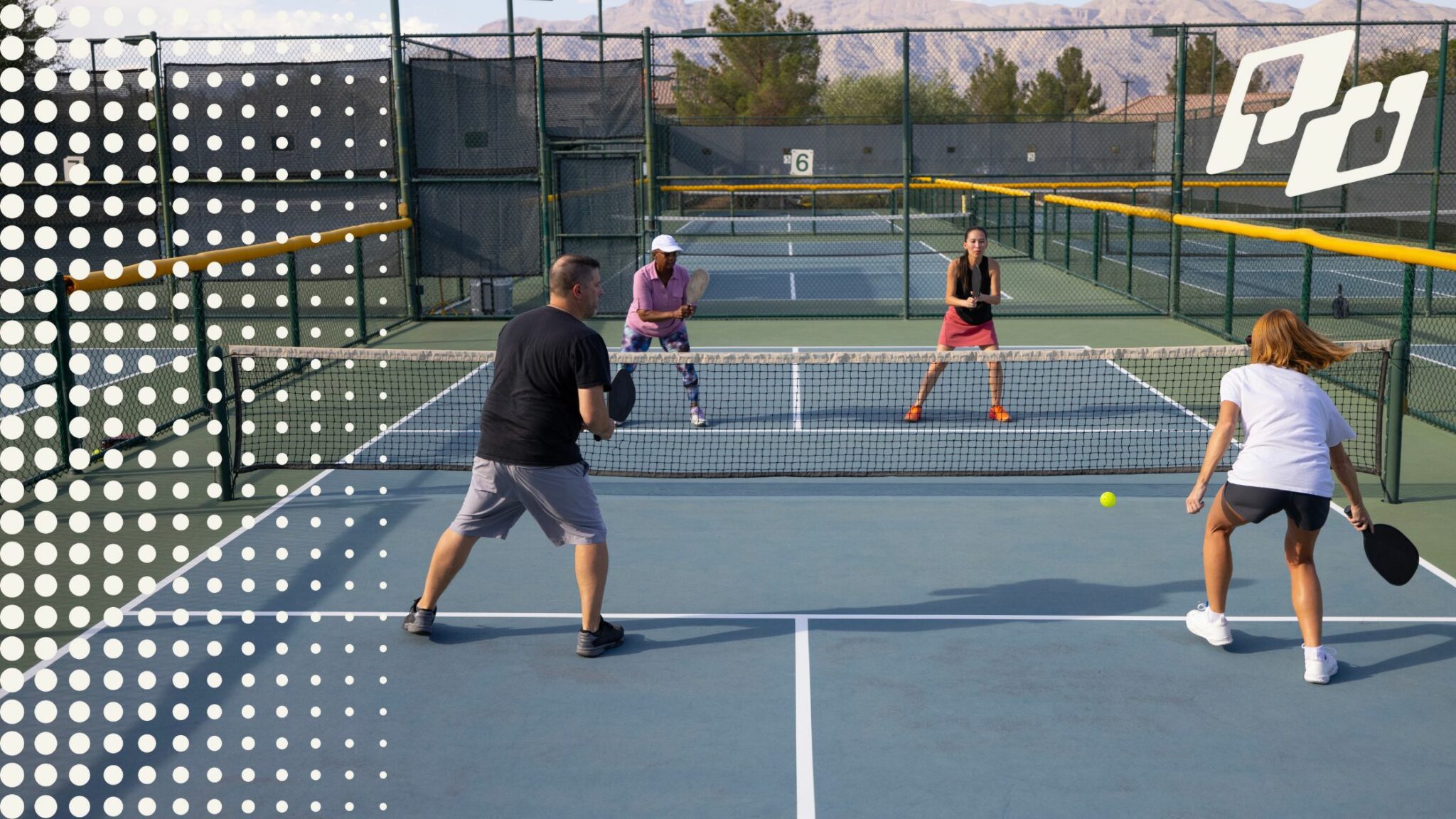
Overcommitting to the Net
One of the most common mistakes in doubles play is overcommitting to the net, leaving the backcourt exposed. Balancing your position and not rushing the net too early can mitigate this risk. Visualize it as balancing on a tightrope, where overreaching or undercommitting can disrupt your stability and performance.
Poor Shot Selection
Choosing the wrong shot at critical moments can turn the tide against you. Always consider your opponent’s position and weaknesses before executing a shot. It’s akin to selecting the right move in a strategic game, where every choice has significant consequences.
Lack of Communication
Communication breakdowns can lead to missed opportunities and points. Regular practice in calling shots, signaling plays, and vocal encouragement can enhance team dynamics. Communication in doubles is like the dialogue in a play, essential for delivering a coherent, impactful performance.
The Mental Game: Staying Focused and Confident
Visualization and Mental Rehearsal
Mental rehearsal and visualization techniques can sharpen your focus and boost confidence. Visualizing successful plays, serves, and rallies can prepare your mind for execution under pressure. It’s like an artist visualizing a completed masterpiece before setting brush to canvas, mentally aligning every stroke before the physical act.
Managing Stress and Pressure
Handling stress and in-game pressure is crucial for maintaining performance. Techniques like deep breathing, mindfulness, and positive self-talk can keep anxiety at bay and ensure you remain centered. Managing stress is akin to a tightrope walker maintaining balance amidst external chaos, focused yet calm.
Cultivating a Winning Mindset
Believing in your abilities and maintaining a positive attitude can make a significant difference. Cultivate a winning mindset by setting achievable goals, celebrating improvements, and learning from setbacks. A winning mindset is like an unyielding light in a storm, guiding you towards success despite challenges.
Fitness and Health: Preparing Your Body for the Game
Strength Training
Building strength is essential for power and endurance in pickleball doubles. Incorporate weight training, resistance exercises, and plyometrics into your routine. Strong muscles support quicker movements and reduce injury risk, much like strengthening the foundation of a building for greater resilience.
Flexibility and Mobility
Flexibility and mobility exercises such as stretching, yoga, and dynamic warm-ups can enhance your range of motion and prevent injuries. Greater flexibility allows more fluid, adaptable movements on the court, akin to the flexibility of a willow tree bending gracefully in the wind.
Nutrition and Hydration
Proper nutrition and hydration are vital for peak performance. Consuming a balanced diet rich in carbohydrates, proteins, and fats, and staying hydrated can ensure sustained energy levels. Think of your body as a high-performance engine requiring premium fuel for optimal function.
Community and Competition: Engaging with the Pickleball World
Local Clubs and Tournaments
Joining local pickleball clubs and participating in tournaments can improve your game and connect you with a supportive community. These settings offer opportunities for competitive play, skill development, and camaraderie. Engaging with the community is like becoming part of an extended family, where shared passion and mutual support drive collective growth.
Learning from experienced players
Mentorship and advice from seasoned players can provide valuable insights and accelerate your learning curve. Watching experienced players can offer new strategies, techniques, and an understanding of advanced gameplay. It’s akin to learning from a master craftsman, absorbing skills and wisdom through observation and guidance.
Volunteering and Promoting the Sport
Volunteering at pickleball events or initiating local leagues can promote the sport and create a thriving community. Contributing time and effort to spread pickleball’s popularity is like planting seeds in a fertile field, nurturing growth and enriching the sport’s ecosystem.
Common Questions
Can I play pickleball doubles without a partner?
While doubles are ideally played with a consistent partner for strategic advantages, occasionally, players may experience a partner shortage. In such cases, practicing solo or joining local clubs to find a partner can help maintain engagement without compromising the essence of the game.
What is a “poach” in pickleball doubles?
A poach in pickleball doubles is when a player crosses over to their partner’s side to intercept a shot. This tactic can surprise opponents and disrupt their rhythm, leading to strategic advantage. Think of poaching as a well-timed surprise attack in a chess game, destabilizing the opponent’s strategy.
What are some common doubles strategies for beginners?
For beginners, focusing on fundamentals like solid communication, consistent serves, and reliable groundstrokes is key. Mastery of positioning and court awareness, combined with basic yet effective shot selections, can significantly elevate the game.
How does the strategy of pickleball doubles differ from the strategy of singles?
Doubles require a greater emphasis on teamwork and positional awareness, whereas singles focus more on individual skill and agility. In doubles, the interplay between partners, covering each other’s weaknesses, and synchronized movements are integral, whereas singles highlight personal endurance and strategic shot placement.
Conclusion
Pickleball doubles offers an exhilarating blend of strategy, skill, and teamwork. Understanding the nuanced double pickleball rules, honing advanced techniques, fostering effective communication, and maintaining physical and mental fitness are keys to mastering this dynamic game. Engage with the pickleball community, participate in tournaments, and never stop learning or improving. Whether you’re a seasoned player or a beginner, the journey in mastering pickleball doubles is as rewarding as the game itself. Find a pickleball court, gather a partner, and experience the thrill of a doubles game! Embrace the teamwork, develop your strategies, and enjoy the exciting competition of pickleball doubles. 🌟
